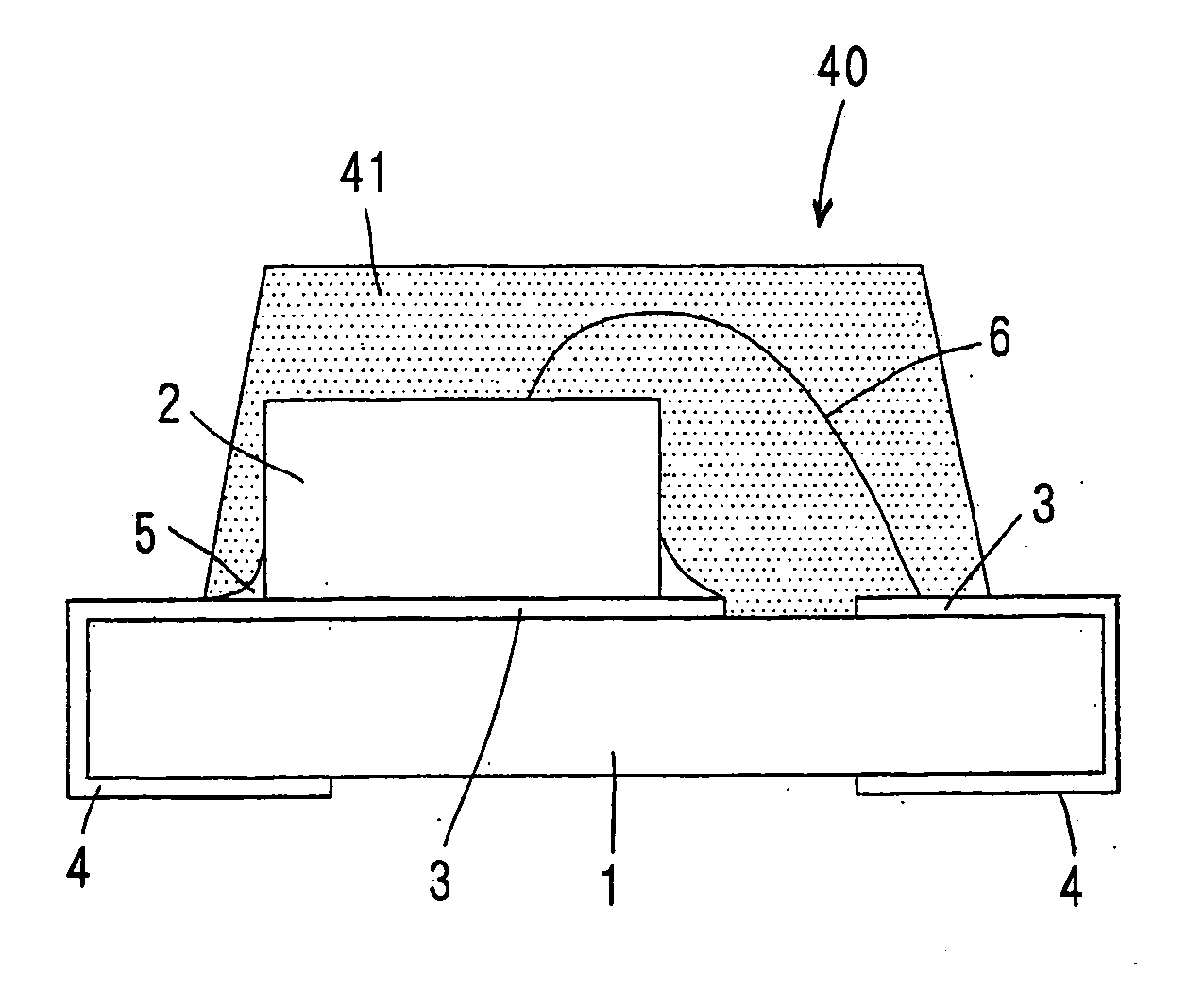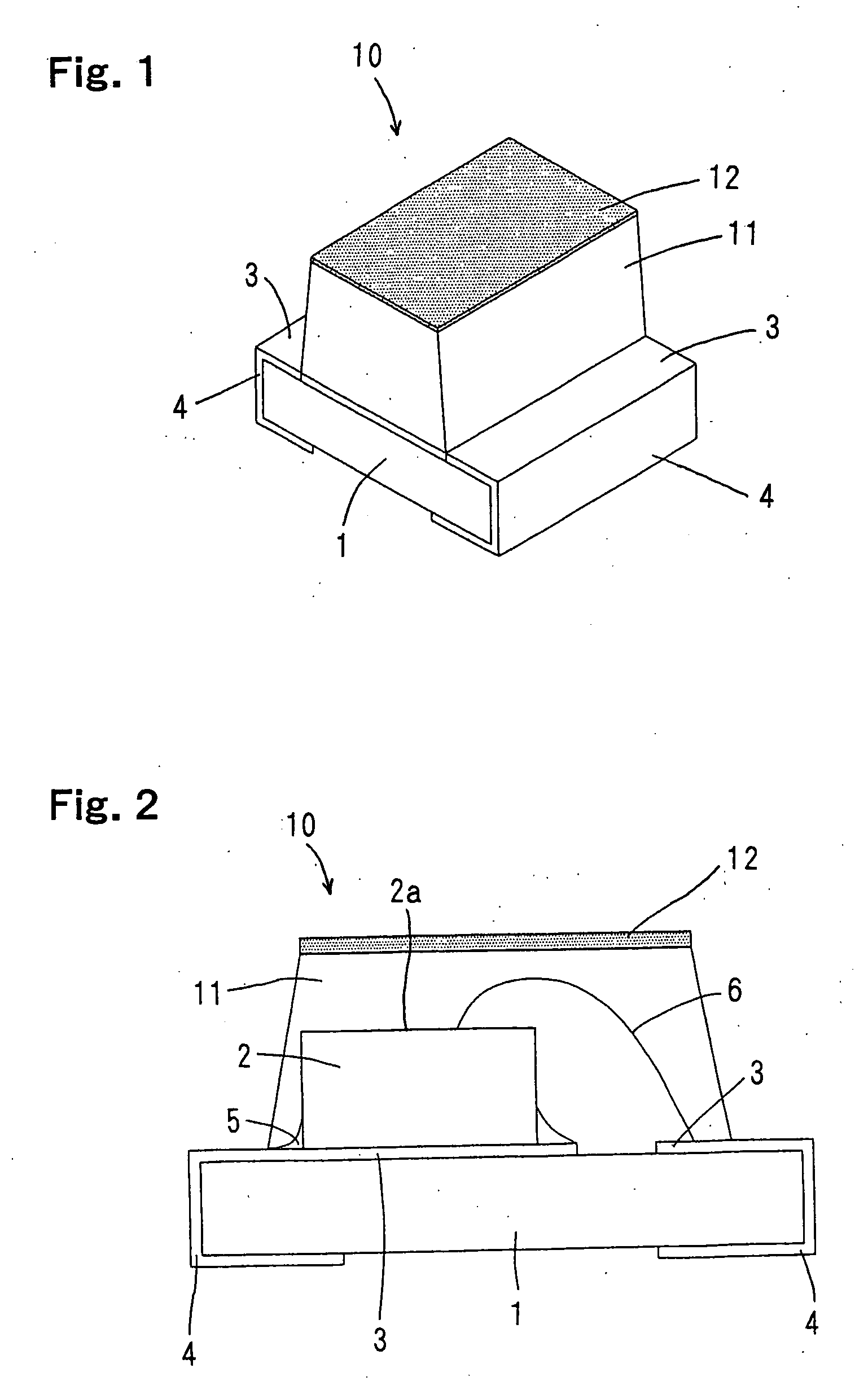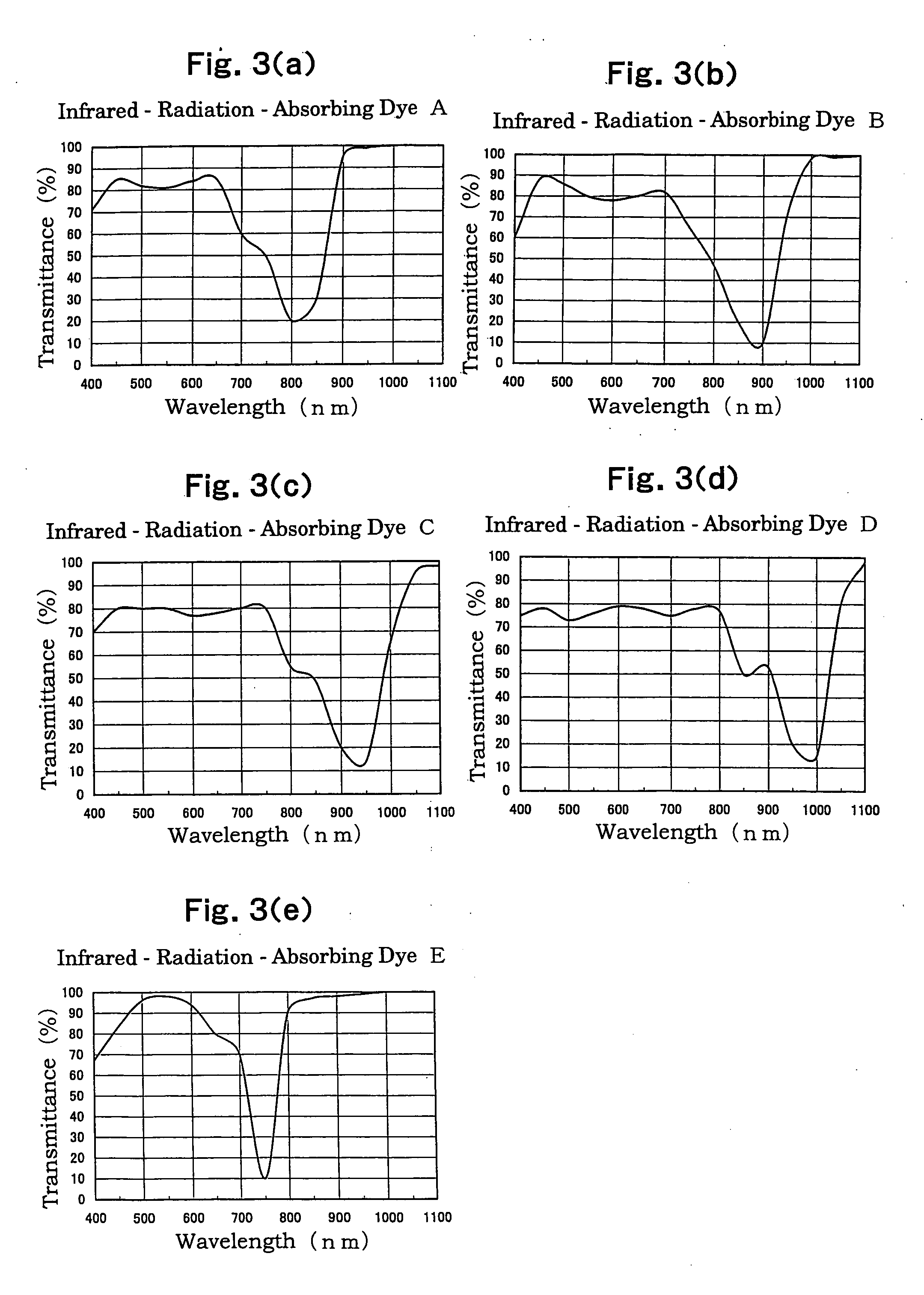Transparent resin composition for optical sensor filter, optical sensor, and process of producing method therefor
- Summary
- Abstract
- Description
- Claims
- Application Information
AI Technical Summary
Benefits of technology
Problems solved by technology
Method used
Image
Examples
embodiment 1
[0063]FIG. 1 is a perspective view showing an optical sensor according to Embodiment 1 of the present invention; and FIG. 2 is a front view in section showing the optical sensor according to Embodiment 1.
[0064] An optical sensor 10 according to Embodiment 1 includes: a substrate 1 having, on a mounting surface thereof, a pair of electrodes (metal pad portions) 3 of opposite polarity; a photodetector 2 electrically connected to the electrodes 3 on the substrate 1; and a light-transmissive resin encapsulating portion 11 for encapsulating the photodetector 2 on the substrate 1; and an infrared-absorbing layer 12 formed on an outer surface of the light-transmissive resin encapsulating portion 11, the infrared-absorbing layer 12 serving as an infrared-blocking layer that is.
[0065] The substrate 1 is made of, for example, glass or an epoxy resin, and shaped in a rectangular plate. The pair of electrodes 3,3 are of opposite polarity and formed at the opposite sides on a mounting surface ...
embodiment 2
[0084]FIG. 9 is a perspective view of an optical sensor according to Embodiment 2 of the present invention; and FIG. 10 is a front view in section showing the optical sensor according to Embodiment 2.
[0085] In an optical sensor 20 according to Embodiment 2, a light-transmissive resin encapsulating portion 21 has an inner resin portion 22 and an outer resin portion 23, the inner resin portion 22 encapsulating the photodetector 2, the outer resin portion 23 covering the inner resin portion 22. The infrared-absorbing layer 12 is made of an infrared-absorbing film interposed between the inner resin portion 22 and the outer resin portion 23. Like reference numerals denote like parts in Embodiment 1 and explanations thereon are omitted.
[0086] The inner resin portion 22 is made of, for example, an epoxy resin having insulating, light-transmissive and thermosetting properties. The outer resin portion 23 is made of, for example, an epoxy resin having light-transmissive and thermosetting pr...
embodiment 3
[0090] FIGS. 12 are a flowchart showing the step of forming the resin encapsulating portions in the production of an optical sensor according to Embodiment 3 of the present invention.
[0091] In the optical sensor according to Embodiment 3, a transparent adhesive layer 24 is interposed between the transparent resin encapsulating portion 21 and the infrared-absorbing layer 12, of Embodiment 2. A process of producing the optical sensor according to Embodiment 3 will be explained as follows. In the step of forming the resin encapsulating portion, the substrate 1 on which as shown in FIG. 12(a), the inner resin portions 22 are mounted to cover the plurality of photodetectors 2, respectively, is set in the lower mold 91, as shown in FIG. 12(b). Next, a transparent-adhesive-layer formation film 24′ having heat resistance is placed on the inner resin portions 22 on the substrate 1, then the infrared-absorbing-layer formation film 12′ is placed on the transparent-adhesive-layer formation fil...
PUM
 Login to View More
Login to View More Abstract
Description
Claims
Application Information
 Login to View More
Login to View More - R&D
- Intellectual Property
- Life Sciences
- Materials
- Tech Scout
- Unparalleled Data Quality
- Higher Quality Content
- 60% Fewer Hallucinations
Browse by: Latest US Patents, China's latest patents, Technical Efficacy Thesaurus, Application Domain, Technology Topic, Popular Technical Reports.
© 2025 PatSnap. All rights reserved.Legal|Privacy policy|Modern Slavery Act Transparency Statement|Sitemap|About US| Contact US: help@patsnap.com



